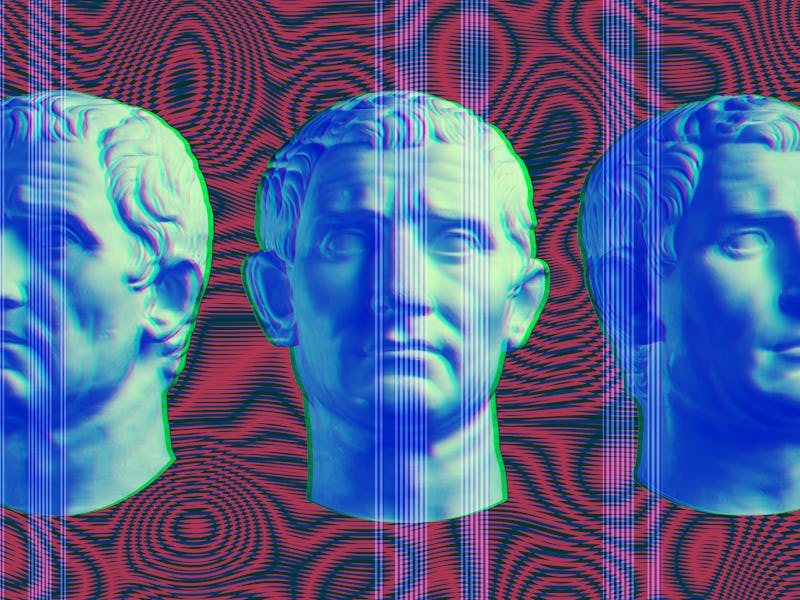"Self-domestication" may have led to the modern human face
A gene mutation linked to soft facial features and sociability may be key to understanding human evolution.

Whether it’s your grandpa’s nose, your mother’s eyes, or the chin the entire family share, humans depend on facial features to tell one another apart, to read emotions and intent, and to communicate with others. But why we share these features, and not others, has long remained a mystery.
Now, a new study published this week in Science Advances suggests the reason our human faces look like they do is due to a long history of accumulated genetic mutations.
It’s likely this is no biological accident. The finding supports the theory of “self-domestication,” which is the idea that ancient people chose to mate with more docile partners and used facial appearance as clues as to who was the least aggressive.
The study argues that mutations associated with gene BAZ1B — which is present in all animals — drove the human face to have slimmer features than our ancient hominid peers, Neanderthals and Denisovans. It may also have played a role in the development of cooperative societies, the study suggests.
BAZ1B mutations in the brain
Ancient humans who carried a mutated BAZ1B gene were selected as mates more often, the study suggests — passing these mutations through the population.
BAZ1B mutations affect human behavior as well as the development of craniofacial features — the gene is linked to Williams syndrome, a genetic condition characterized by an highly social disposition.
Unique genes led to the development of the modern human face.
The modern human face acquired its shape as an instance of mild neurocristopathy — when something is off with the development of an embryo’s neural crest — the study suggests.
The neural crest gives rise to some of the body’s most crucial cells, including those that eventually make up the craniofacial bones. The neural crest has also been linked to animal domestication, the authors tell Inverse. That led them to examine how BAZ1B in the human neural crest affects our body.
Previous work involving individuals with Williams syndrome shows that they tend to have softer facial features compared to the general population, as well as friendly dispositions. Stem cells harvested from these individuals revealed they either had duplicated or deleted BAZ1B genes, indicating that it plays a crucial role in facial features.
The researchers then examined the genotypes of one Denisovan and two Neanderthals to see how BAZ1B was expressed as compared to modern humans who do not have Williams syndrome. In the modern human sample, a subgroup of the genes regulated by BAZ1B — 40 percent of the genes expressed by human neural-crest stem cells — had fixed mutations in their regulatory regions, according to the study.
This suggests that BAZ1B genes play a powerful role in the evolution of the modern human face and the tendency for sociability generally found across our societies. While it may not seem it all the time, scientists generally consider us a domesticated species — we co-operate and interact socially.
How human faces evolved
The findings jibe with past research suggesting Neanderthals and Denisovans don’t have genes linked to domestication in humans — indicating that something happened in the course of human evolution to make us more social.
A model of a Neanderthal at Britain's Natural History Museum.
While the study does add to the evidence for the self-domestication theory, it is important to consider it context of the theory’s origins. The theory’s first proponent, Johann Blumenbach, infamously invented the word “Caucasian” and placed them at the top of a hierarchical pyramid of races. These findings do not mean that facial traits can be used to define an individual’s aggressiveness or any other characteristics, the authors say. That’s just the racist and sexist pseudoscience of physiognomy.
"The self-domestication assumptions do not refer to single individuals but to the entire humankind.”
“The self-domestication theory that we support claims that there might have been a process of self-selection that was based on the selection of less aggressive individuals, indirectly selecting those who had a reduced neural crest production,” the team explained to Inverse in an emailed statement. “The self-domestication assumptions do not refer to single individuals, but to the entire humankind.”
Conditions like Williams syndrome are rare examples in which facial traits can help diagnose the condition. But personality is much more the byproduct of our interactions and environment.
In our evolutionary past, it’s possible that our ancestors unknowingly selected mates based on certain traits, and that led us to look distinctly human. But facial features can come in all shapes and sizes — studies suggest that the wide variety of features we see today are a result of evolutionary pressure to make individuals recognizable as, well, individuals.
Abstract:
We undertook a functional dissection of chromatin remodeler BAZ1B in neural crest (NC) stem cells (NCSCs) from a uniquely informative cohort of typical and atypical patients harboring 7q11.23 copy number variants. Our results reveal a key contribution of BAZ1B to NCSC in vitro induction and migration, coupled with a crucial involvement in NC-specific transcriptional circuits and distal regulation. By intersecting our experimental data with new paleogenetic analyses comparing modern and archaic humans, we found a modern-specific enrichment for regulatory changes both in BAZ1B and its experimentally defined downstream targets, thereby providing the first empirical validation of the human self-domestication hypothesis and positioning BAZ1B as a master regulator of the modern human face. In so doing, we provide experimental evidence that the craniofacial and cognitive/ behavioral phenotypes caused by alterations of the Williams-Beuren syndrome critical region can serve as a powerful entry point into the evolution of the modern human face and prosociality.